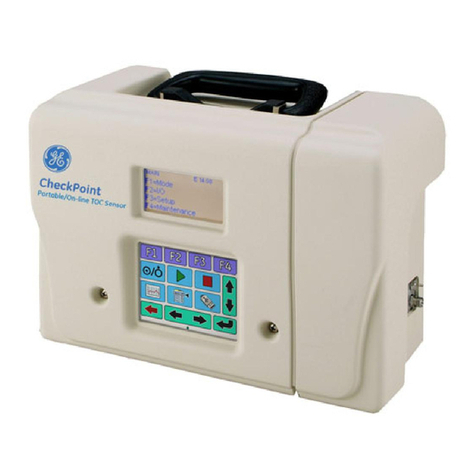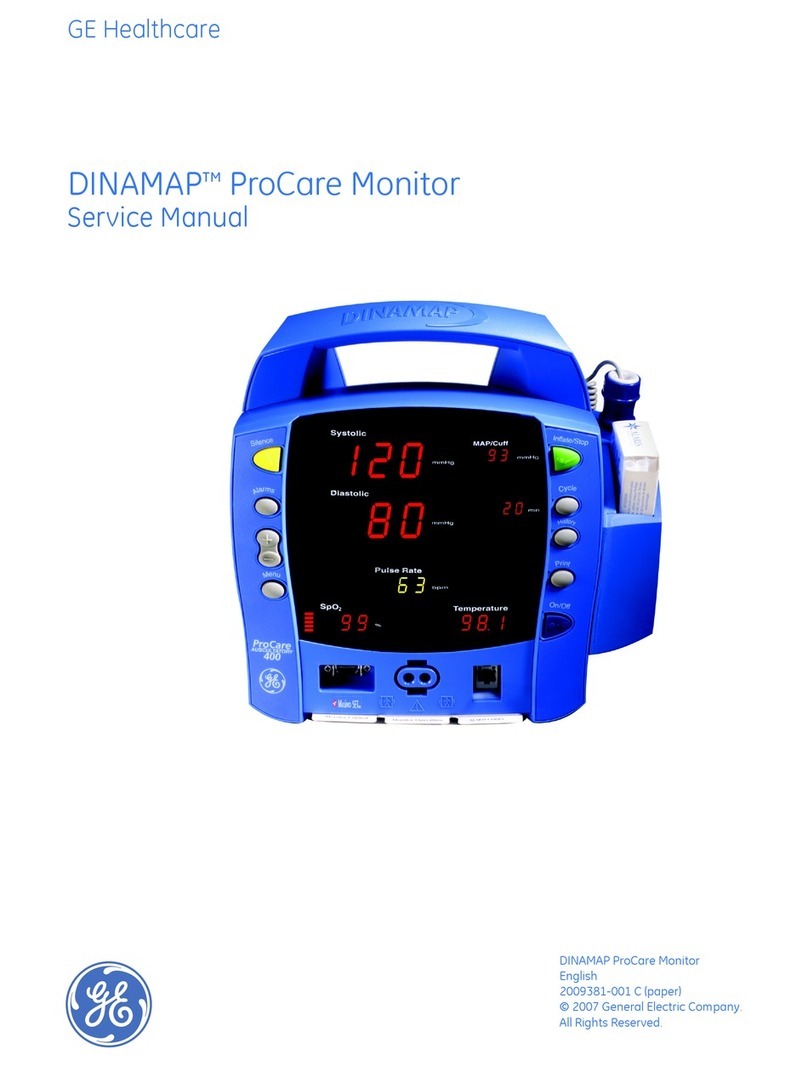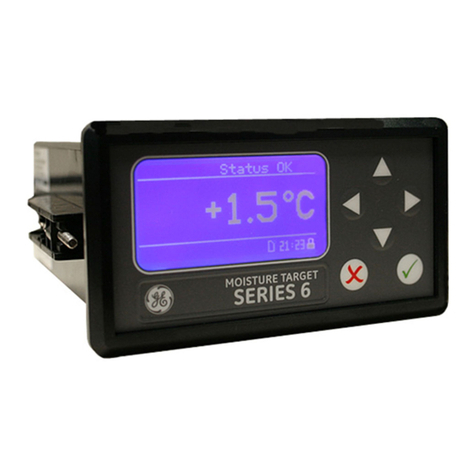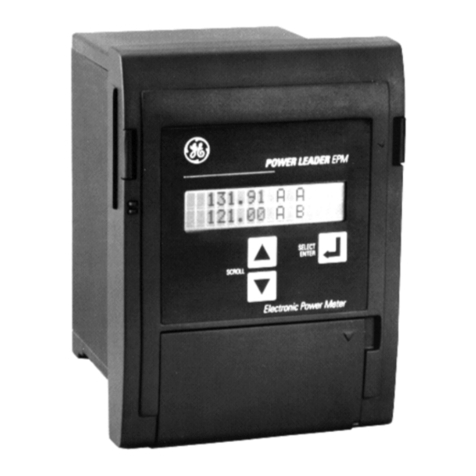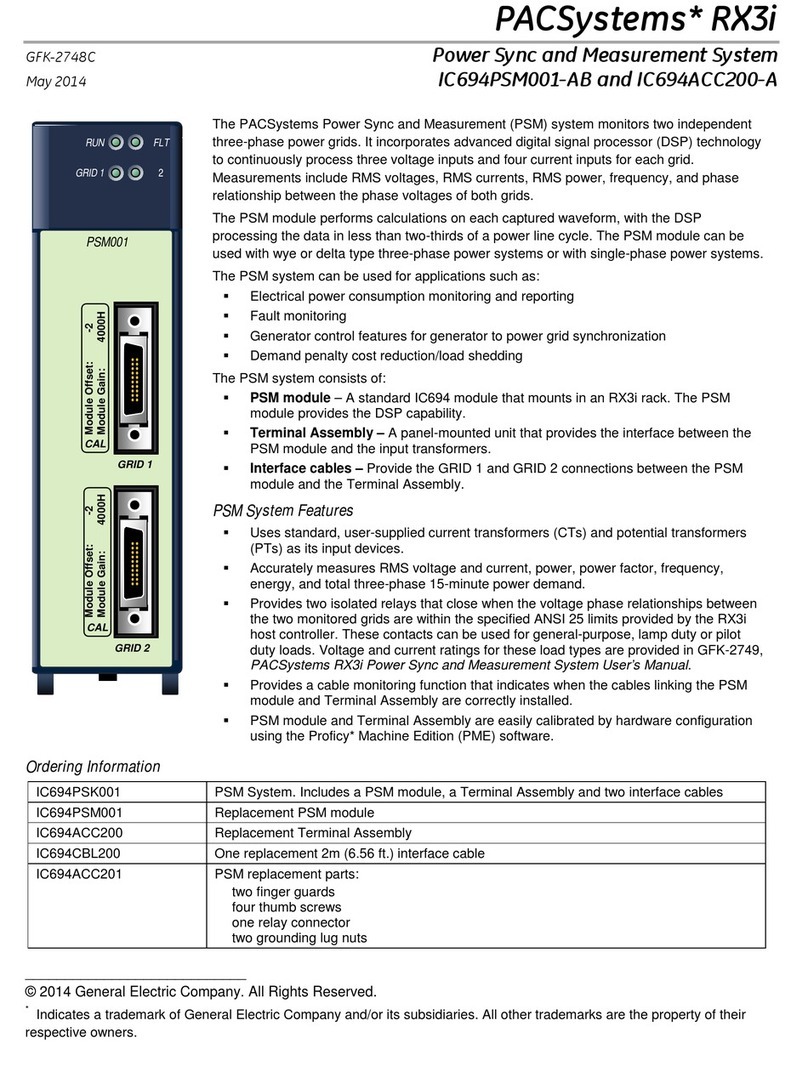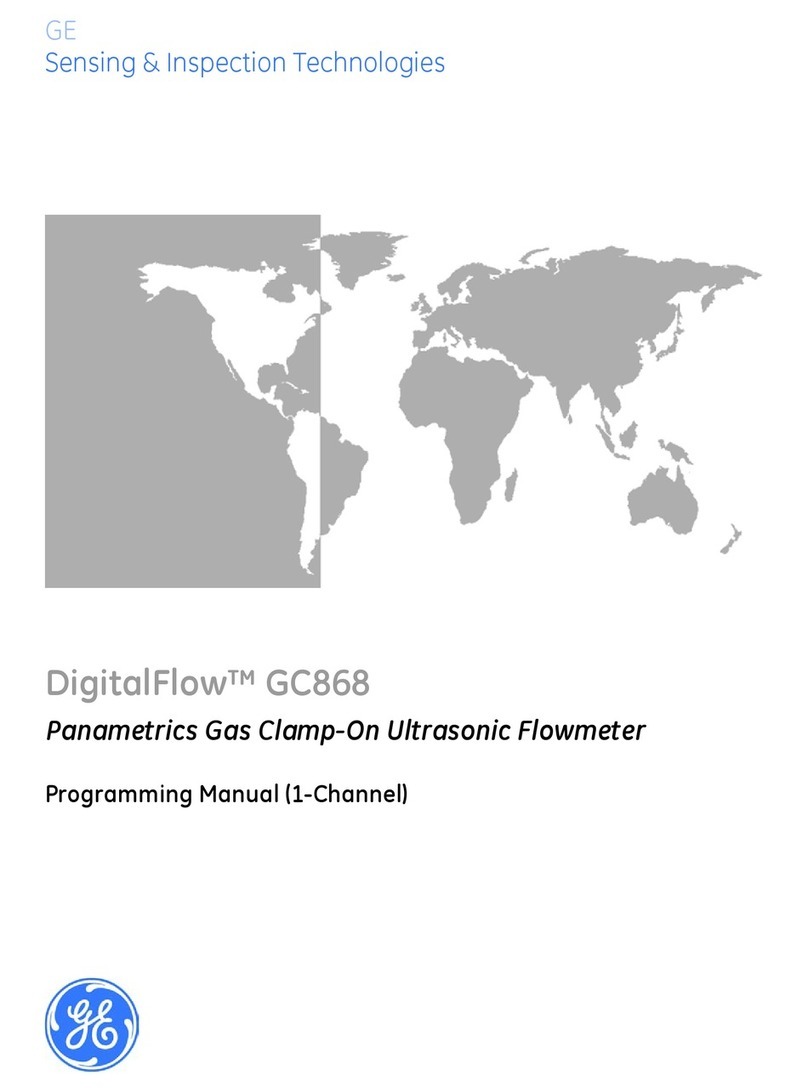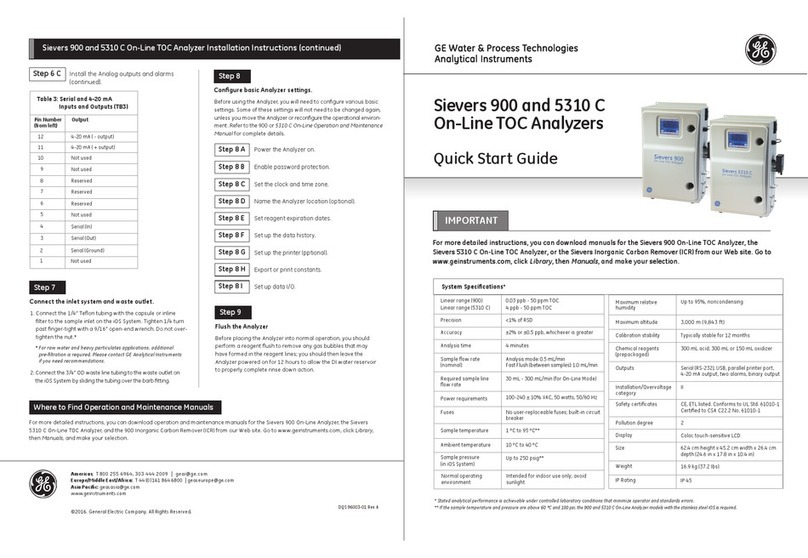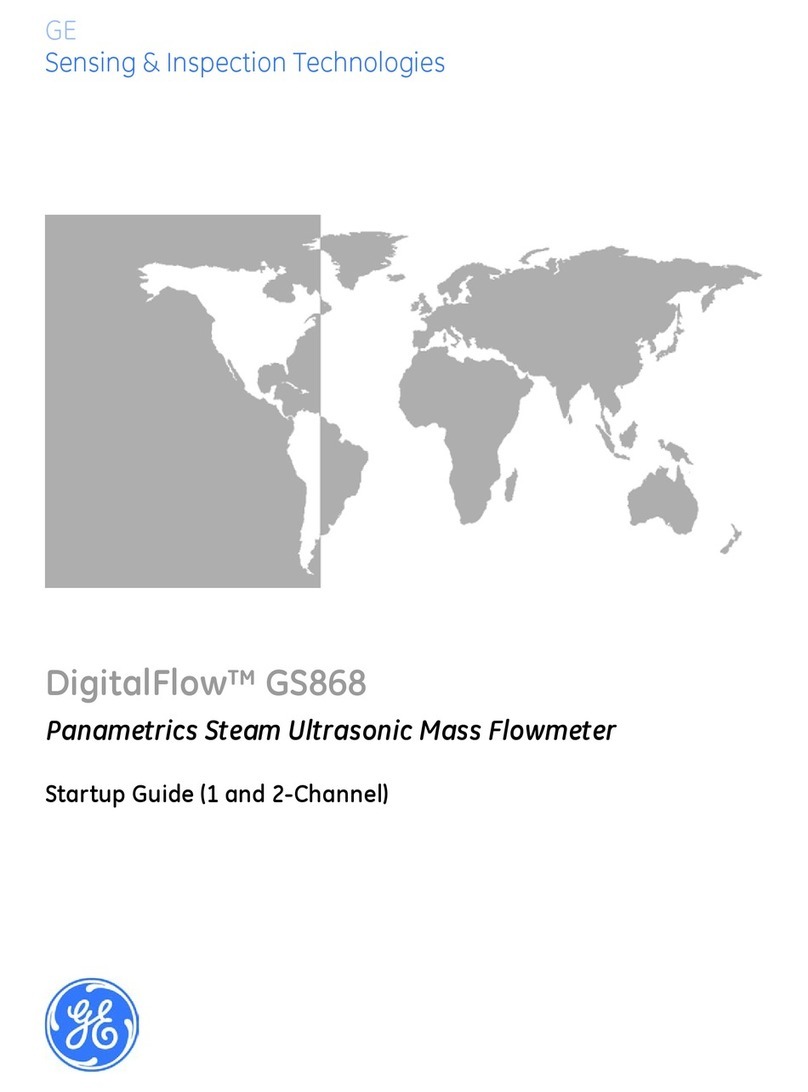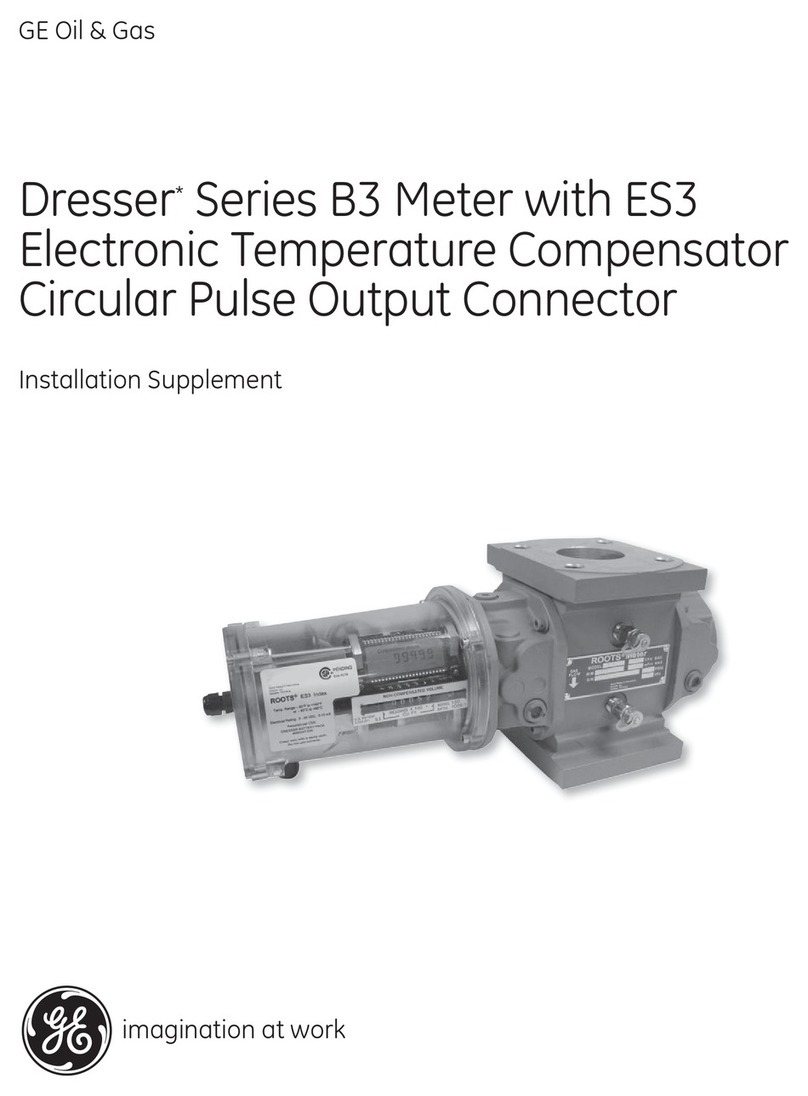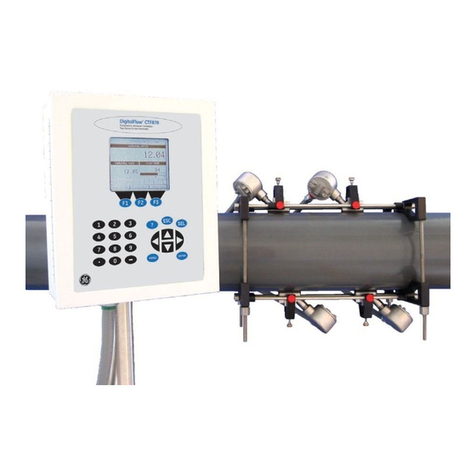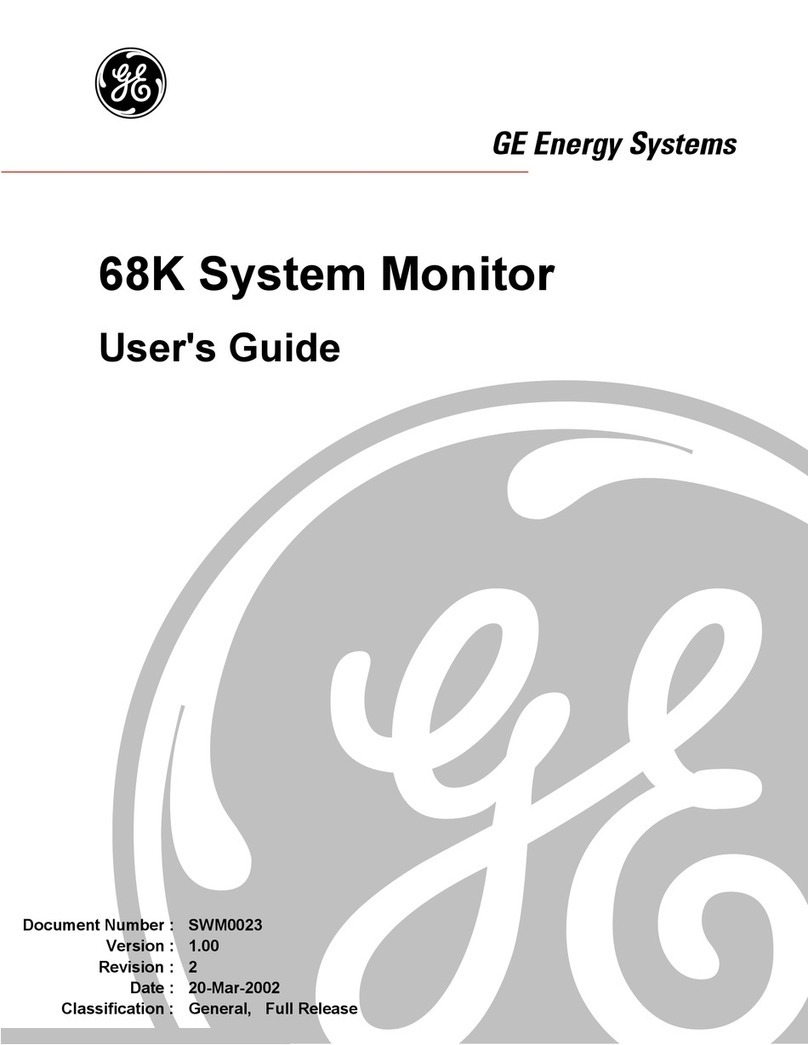
EPM 6010 MULTI-FUNCTION POWER METERING SYSTEM – USER GUIDE TOC–1
Table of Contents
1: THREE-PHASE
POWER
MEASUREMENT
THREE-PHASE SYSTEM CONFIGURATIONS ........................................................................... 1-1
WYE CONNECTION .............................................................................................................. 1-1
DELTA CONNECTION ........................................................................................................... 1-3
BLONDELL’STHEOREM AND THREE PHASE MEASUREMENT ......................................... 1-5
POWER, ENERGY AND DEMAND ............................................................................................... 1-8
DEMAND ...............................................................................................................................1-10
REACTIVE ENERGY AND POWER FACTOR ............................................................................. 1-12
REAL, REACTIVE, AND APPARENT POWER ........................................................................ 1-12
POWER FACTOR ................................................................................................................... 1-13
HARMONIC DISTORTION .............................................................................................................. 1-14
INDUCTIVE AND CAPACITIVE IMPEDANCE .......................................................................... 1-15
VOLTAGE AND CURRENT MONITORING ............................................................................ 1-15
WAVEFORM CAPTURE ......................................................................................................... 1-16
POWER QUALITY .............................................................................................................................. 1-17
2: OVERVIEW AND
SPECIFICATIONS
HARDWARE OVERVIEW ................................................................................................................. 2-1
VOLTAGE AND CURRENT INPUTS ...................................................................................... 2-3
ORDER CODES ..................................................................................................................... 2-3
MEASURED VALUES ............................................................................................................ 2-4
UTILITY PEAK DEMAND ....................................................................................................... 2-4
SPECIFICATIONS ............................................................................................................................... 2-6
3: MECHANICAL
INSTALLATION
INTRODUCTION ................................................................................................................................ 3-1
ANSI INSTALLATION STEPS .......................................................................................................... 3-3
DIN INSTALLATION STEPS ........................................................................................................... 3-4
EPM6010 TRANSDUCER INSTALLATION ................................................................................ 3-5
4: ELECTRICAL
INSTALLATION
CONSIDERATIONS WHEN INSTALLING METERS ................................................................. 4-1
CT LEADS TERMINATED TO METER ................................................................................... 4-2
CT LEADS PASS-THROUGH (NOMETER TERMINATION) ................................................ 4-3
QUICK CONNECT CRIMP CT TERMINATIONS ................................................................... 4-3
VOLTAGE AND POWER SUPPLY CONNECTIONS .............................................................. 4-4
GROUND CONNECTIONS .................................................................................................... 4-5
VOLTAGE FUSES .................................................................................................................. 4-5
ELECTRICAL CONNECTION DIAGRAMS .................................................................................. 4-6
DESCRIPTION ........................................................................................................................ 4-6
(1) WYE, 4-WIRE WITH NO PTSAND 3 CTS, NO PTS, 3 ELEMENT ............................ 4-7
(1A) DUAL PHASE HOOKUP ............................................................................................... 4-8
(1B) SINGLE PHASE HOOKUP ............................................................................................ 4-9
(2) WYE, 4-WIRE WITH NO PTSAND 3 CTS, 2.5 ELEMENT ........................................ 4-10
(3) WYE, 4-WIRE WITH 3 PTSAND 3 CTS, 3 ELEMENT .............................................. 4-11
(4) WYE, 4-WIRE WITH 2 PTSAND 3 CTS, 2.5 ELEMENT ........................................... 4-12
(5) DELTA, 3-WIRE WITH NO PTS, 2 CTS....................................................................... 4-13
(6) DELTA, 3-WIRE WITH 2 PTS, 2 CTS......................................................................... 4-14
(7) DELTA, 3-WIRE WITH 2 PTS, 3 CTS......................................................................... 4-15
(8) CURRENT-ONLY MEASUREMENT (THREE-PHASE) .................................................... 4-16













